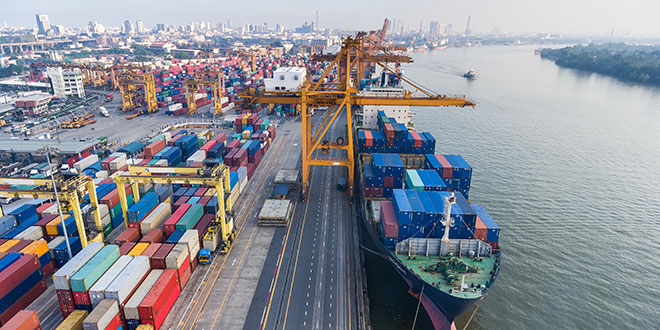With the holiday season over, inbound cargo volume at the nation’s major container ports will gradually slow during the first quarter of 2024, but is expected to ramp up in the spring, according to the Global Port Tracker report released by the National Retail Federation (NRF) and Hackett Associates.
“This is the traditional slowdown when the supply chain gets a break after the busy holiday season, but there’s always a new challenge on the horizon,” says Jonathan Gold, NRF vice president for supply chain and customs policy. “Attacks on cargo ships in the Red Sea have been in the headlines, and the disruptions caused by those attacks have once again created volatility in retail supply chains. Retailers are working with their carrier partners on mitigation strategies to limit the impact, but we are seeing longer transit times and increased costs as a result.”
Hackett Associates founder Ben Hackett says any effect from the Red Sea attacks will likely come to east coast ports in New York, Miami, Savannah and Virginia. Most cargo headed to the East Coast from Asia comes across the Pacific and through the Panama Canal. But some come through the Red Sea before crossing the Atlantic, and carriers’ decision to go around the Cape of Good Hope to avoid the attacks is adding five or six days to the month-long trip from Shanghai to Savannah via the Suez Canal. And some retailers are reporting delays of as long as two weeks.
“The number of containers arriving at East Coast ports should not be directly affected if carriers add ships to maintain capacity, but shippers will have to adjust their supply chains to cope with longer transit times,” Hackett says. “We may see an increase of Asian cargo arriving at West Coast ports and then shipped east via intermodal rail, but doing so is costly and does not save that much time. As might be expected, carriers are passing on the additional voyage costs and then some.”
U.S. ports covered by Global Port Tracker handled 1.89 million Twenty-Foot Equivalent Units (TEU) in November, the latest month for which final numbers are available. That was down 8% from 2.06 million TEU in October, which was the busiest month of the year and the peak of the fall shipping season, but up 6.6% from November 2022.
Ports have not yet reported December numbers, but Global Port Tracker projected the month at 1.89 million TEU, up 9% year over year.
Volume is expected to rise to 1.92 million TEU in January, a year-over-year increase of 6.1%, before slowing for the remainder of the quarter.
 Hardware Retailing The Industry's Source for Insights and Information
Hardware Retailing The Industry's Source for Insights and Information








